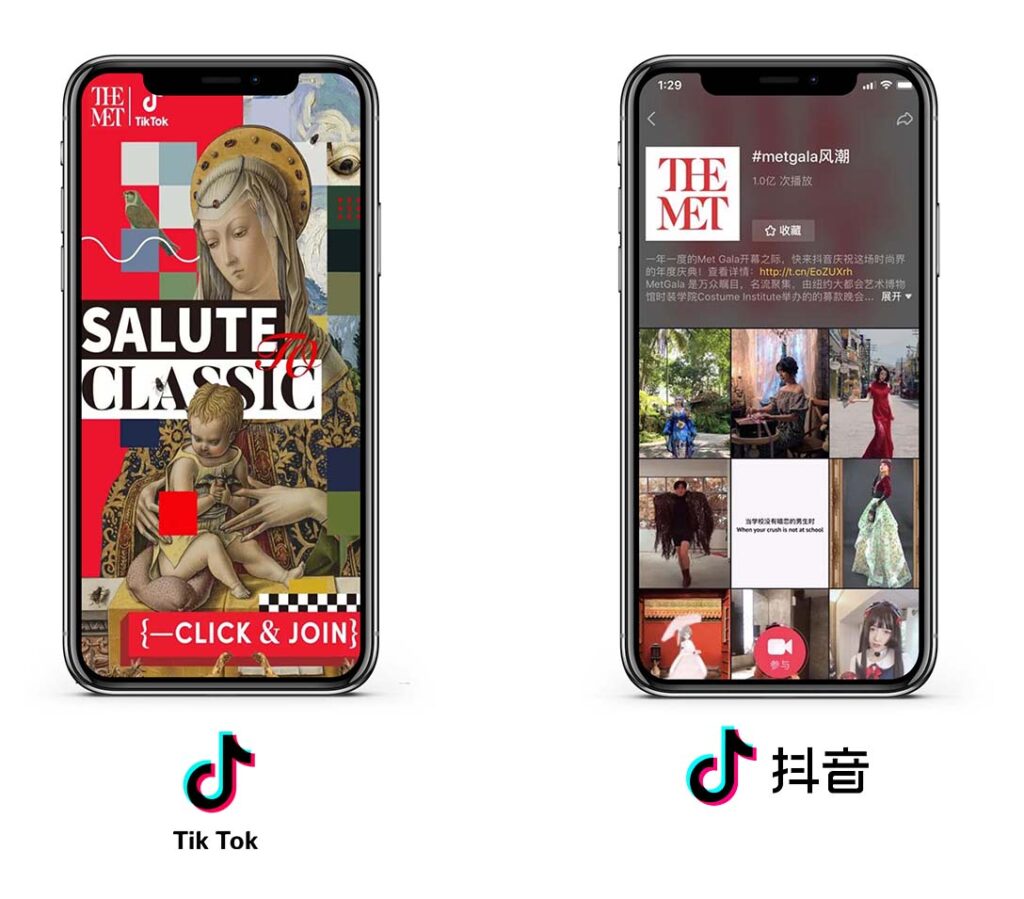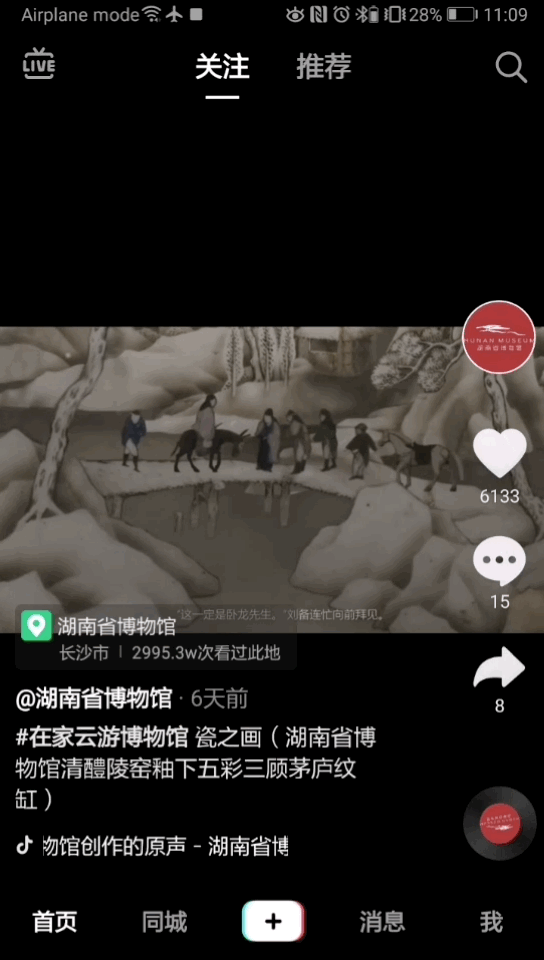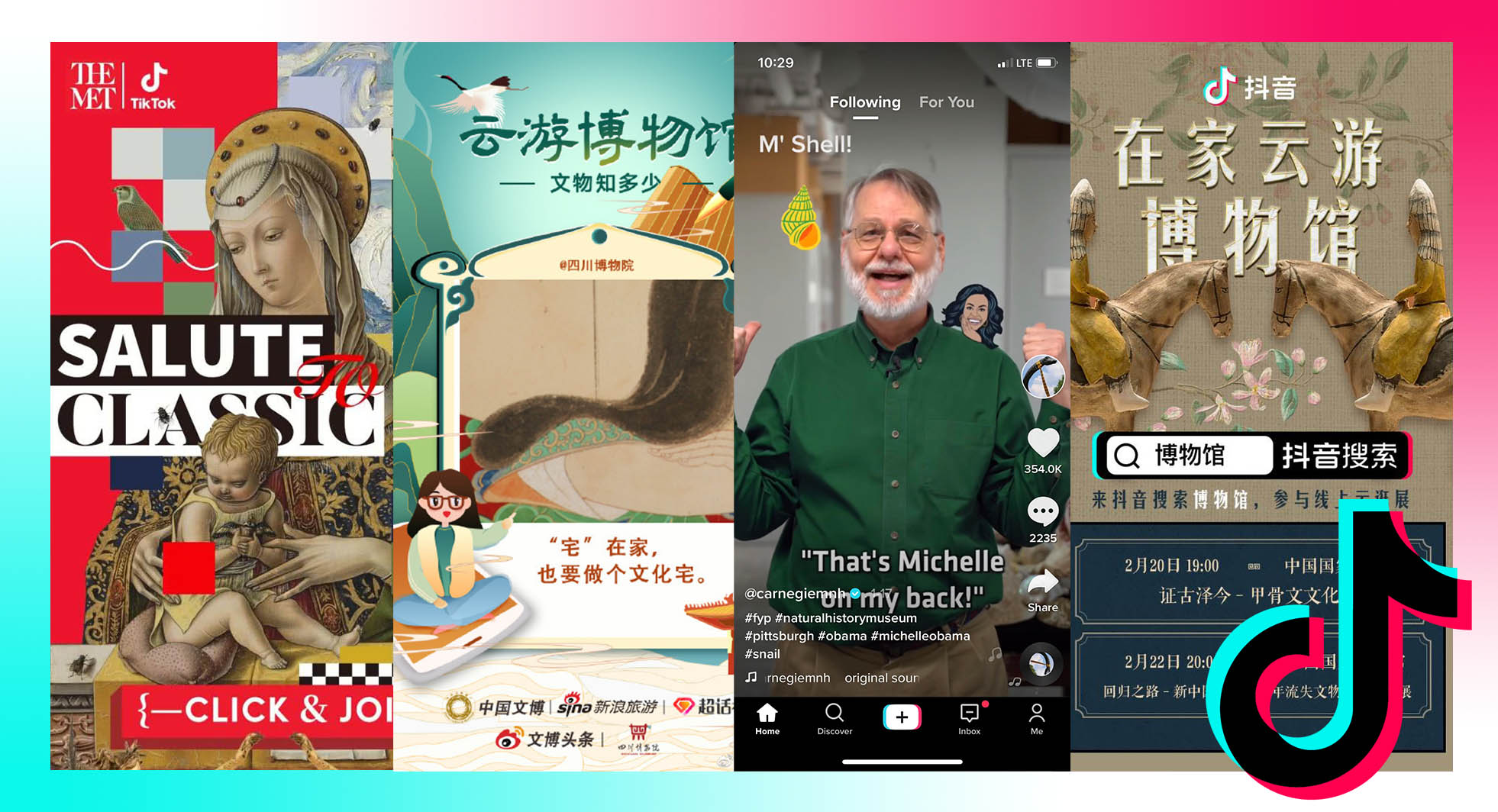Before TikTok, Tim Pearce’s online presence was, as might be expected for a curator of mollusks, non-existent. Eleven short-videos and more than 1.5 million views later, Pittsburg’s Carnegie Museum of Natural History (CMNH) has a veritable internet star on staff — and newfound exposure among teenagers. The focus of the 15 second clips? Snail puns.
Joking aside, TikTok was the most downloaded app worldwide in 2019 and boasts over 717 million monthly users. Unlike other social media platforms awash with influencers and advertisements, TikTok continues to connect users with creative and quirky content aided by an ingenious, read addictive, algorithm.
Launching on yet another social media platform might seem unnecessary for cultural institutions, but as CMNH’s example shows, TikTok is a powerful tool for expressing brand personality and reaching an often-disengaged demographic — young audiences. A 2019 report showed 60 percent of TikTok’s U.S. users were aged between 16 and 24.
Tiktok vs Douyin

While TikTok trends center around hashtags, Douyin also uses geolocation to organize content (see green icon). Image: Carnegie Museum of Natural History (left). The National Museum of China (right).
Formerly known as musical.ly, an app which gained prominence in the 2010s for platforming lip-syncing videos, it was bought by nascent Chinese tech giant ByteDance in 2017. TikTok’s rebranding essentially turned it into a Western companion for Douyin, a Chinese short-video app that arranges content on a vertical scroll. However, despite cosmetic and thematic similarities (EDM-backed dance routines and, of course, the fluffiest cats bridge hemispheres), the two remain distinct entities. A thorough separation of marketing, legal, business development teams was completed in Q3 2019 to quell the suspicions of U.S. authorities.
As such, Western cultural organizations hoping to connect with Chinese millennials and Gen Zers on Douyin must launch accounts in China and coordinate campaigns with a local partner. Navigating this administrative hurdle grants access to 400 million daily users on a platform which self-identifies as China’s largest non-promotional platform for culture, art, and learning. The proof? Douyin hosted 543 billion art-related plays in 2019.
New York’s Metropolitan Museum of Art, meanwhile, held a successful Douyin campaign prior to their MET Gala 2019. Guided by local China partner, Alfilo Brands, it tasked 36 Chinese influencers to get dolled up as if attending the Fifth Avenue Fête and post their interpretations of the theme, “Camp: Notes on Fashion”. It created a pair of hashtags for the campaign with one, #atributetotheclassics, receiving more than 130 million plays.

MET is one of the few western cultural institutions attempting campaigns on both TikTok and Douyin. This has been achieved through a partnership with Chinese licensing and branding experts Alfilo Brands. Image: Tencent (left). Cnarts.net (right)
Chinese Museums on Douyin
Chinese museums, by comparison, have been plugged into Douyin for several years. Compelling evidence of their ability to succeed on the platform came on International Museum Day in 2018. Seven national museums turned treasures from Tang dynasty figurines to Shang dynasty bronze cauldrons into choreographed dancing relics. Videos tapped into Douyin’s “challenge” feature — in which users complete for popularity by posting responses to trending hashtags — such that thousand-year-old objects mimicked popular dance moves including the ash-sweeping dance and the 98K electric eyes (don’t worry, we’re equally oblivious). Participating museums received millions of plays and gained 360,000 followers in a single day according to China Daily.
Beyond emphasizing a millennial penchant for humorous dance videos, the campaign shows the strength of how Douyin operates within China’s expansive social media ecosystem compared to TikTok. Whereas TikTok campaigns connect solely to internal hashtags, Douyin hashtags cross onto other platforms such as Weibo thereby greatly expanding the potential reach of trends.
A recent example was the “cloud tour” (云游) hashtag created to draw awareness to online collections and digital exhibitions as cultural institutions remain closed due to the coronavirus. The hashtag spread across Weibo in anticipation of a series of Douyin livestreams held by curators from nine national museums. The hour-long explorations used 360-degree virtual tour software to walk users through some of the nation’s most prestigious repositories of culture. The thousands of netizens that logged on to follow the late-February event experienced a synergy of Chinese tech and culture that brings new meaning to the cherished expression “intangible cultural heritage.”

Hashtags for “Cloud Tour” were shared on both Weibo and Douyin. The platforms supported one another with Weibo growing audience and Douyin platforming livestreams hosted by museum curators. Image: Weibo (left). Weibo (right).
Activate Visitors to Spark Organic Promotion
“For cultural destinations, Douyin could play a critical part in reaching China’s younger generations,” says China Skinny’s marketing manager, Alexander Hefel. “The Douyin Challenge feature is a great way for cultural destinations to generate positive word-of-mouth recommendations via user-generated content…providing a hashtag essentially gamifies the post for users to compete who can get the most post views.”
This touches upon another advantage of launching on TikTok and Douyin; enabling organic promotion by encouraging visitors to post while visiting cultural destinations. Most visitors are already using smart phones on site, why not capitalize on an already engaged audience by providing them with a hashtag? Douyin saw 660 million user check-ins at cultural sites in 2019 with China’s national heritage sites receiving 3.33 billions likes. Aside from sheer scale, the numbers illustrate both the tendency to create impromptu culture-focused videos and a Chinese audience that is receptive to such content back home.
This engagement has the potential to go deeper than a passive “play”. Posts made at museums and cultural attractions typically geolocate automatically, which means envious Douyin users back home can click onto to an organization’s Douyin page. Once there, users can learn basic information, join a discussion board, browse video content, and shop on an integrated e-commerce page. In truth, browsers may be thousands of miles away, but the majority of engagements on Chinese social media platforms should be made with a long-term vision of growing institutional awareness.

A runthrough of discovering and exploring the “Cloud Tour” campaign. Searching using hashtags reveals participants, including museums, and users can click through to the Douyin accounts of institutions. Gif: Douyin.
Conclusion
As CMNH’s successful snail videos show, TikTok is a platform that rewards authenticity and quirky content. Whether an institution is home to world-famous Impressionist paintings or matchstick miniatures (yes, it exists), the key is to use TikTok to show personality — a playful geekiness in CMNH’s case. While TikTok and Douyin are entirely separate platforms, success on ByteDance’s international app creates a strong model to work from. Launching on Douyin means navigating logistical barriers, but, as MET’s 2019 campaign showed, it can be achieved through forethought and a strong local partner.
Edited by Peter Huang and Marc Einsele



